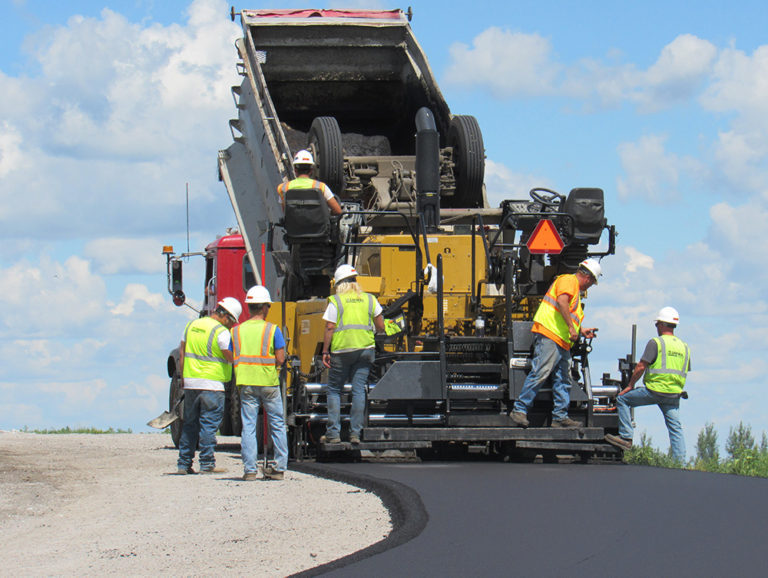An accident at a jobsite leaves at least one person seriously injured – or dead. Workers are left wondering: was this an accident or was there something the company could have done to prevent it? And before the construction company has time to start its internal review of what went wrong, there are comments on Twitter, videos on Facebook and pictures across all digital platforms.
With one in five work-related deaths occurring in construction, industry executives across the U.S. are certainly aware that this is a major risk area – both operationally and reputationally. The challenge itself is not new, but the culture has changed and the expectations for communications in a crisis have become more intense. Construction company leaders are expected to be transparent about what happened, accountable for any mistakes and authentic in their concern for the individuals impacted – all within minutes of the situation unfolding.
Where once the major concern was communicating directly with employees and the family of the injured or the deceased (and, by the way, that’s still the priority), company leaders now need to be prepared that the issue will get wider play as employees or bystanders share images on social media. The raw grief that comes from social media posts in these situations (sometimes blaming the company, sometimes not) can capture wider attention and sometimes trigger traditional media. And even on the smallest jobsites a death is likely to be news in the local media, news that will be amplified online.
While many companies have operational plans in place to aid with response, having an actionable communications plan will make it easier to address communications needs at an emotional time. Digital communications must be a part of that plan. But when the situation involves something as sensitive as the loss of life on the job, how much information should be shared? And, what if anything, should be said?
Tips for addressing a serious injury or death on social media
Create a Culture of Safety
Even before something goes wrong, make sure the company is talking about its approach to workplace safety, employee training and related topics. A page on the website and content in e-newsletters or marketing materials can be repurposed as posts on social media. If something negative were to happen, the company’s social media followers would have a baseline understanding that safety is a core corporate value.
Be Prepared to Move Fast
Interestingly, the first step in a good social media response in a crisis is NOT always to post on social media. Instead, communicate directly with the audiences that matter most to the company: its leadership team, employees and the family of the impacted employee. It’s critical that they hear from a person in leadership about the issue, if possible, before it starts cropping up on social media. That’s not always easy or practical in a fast-moving situation (an unanticipated and ongoing fire on the site, the collapse of a major piece of the site infrastructure, etc.). That’s why preparation is key: who are the audiences (employees on the site, employees across the company, major investors, clients across all sites, regulatory bodies, etc.), how the company will reach them in an emergency and who is responsible for deciding what to say. Many times it is even possible to agree in advance what the company will say during the first hours after a difficult situation:
- acknowledge the issue;
- put the focus on supporting people on the site;
- show empathy and concern for the impacted parties;
- highlight next steps (an investigation, work stoppage at the site until the company knows more); and
- provide a timeline for updates.
Being in a strong position to share information immediately with the audiences most important to the company means people are less likely to look for information on social media or share incomplete or inaccurate information on social media.
Know the Tools
The corporate website is ground zero for sharing official content and information; does it have a place where a statement about the events would be easy to find and is appropriate? It need not be posted on the home page, but a news section or a special notice on the “about us” page could both be appropriate. Once the content is available digitally, the company has more flexibility to manage social media fallout.
In terms of social media, where does the company have a presence: Facebook? LinkedIn? Twitter? Instagram? How does the company typically use the tools? Who are the company’s followers? Does the company discuss its culture of safety routinely on social media? Would it be jarring to see something so difficult on those platforms? Understanding the answer to those questions in advance can help a company determine if it should address an employee death or injury proactively or reactively on social media.
Share the Facts
In both traditional and digital content, determining how much to share is challenging. In addition to potentially not having all of the information, there are concerns about legal liability and regulatory oversight to consider. However, maintaining corporate reputation in today’s market requires transparency and timeliness. Have a conversation today with corporate legal counsel and senior leadership to determine how much the company would be willing to share in a crisis. Workshop some possible scenarios to figure out how much the company might be in a position to share, with what audiences and when. This will put the company in a stronger position to communicate at the outset about what type of information audiences can expect from the company going forward. And if members of the legal or leadership team are arguing against transparency, just remember: if the company doesn’t define the situation and share the facts, someone else may do it.
Maintain the Right Tone
In the event of serious injury or death, the first response must always be compassion and empathy. Of course, the company will want to reinforce the steps it took to maintain a safe environment, but do so in a way that is respectful. And it is enormously important that a company take care not to place blame on the employee (“she wasn’t following policy” or “he didn’t wear his safety harness”). At the end of the day, it is company leadership that is held accountable for training/education, policies and oversight being successful.
Use Social Outlets Judiciously
Many companies refuse to post about a negative issue on social media and that’s not always the wrong decision. If there is an easy way to find a statement on the company website, limited traditional media coverage or social chatter, and a set of social tools that is unwaveringly focused on positive news, positing on social may create more problems than it solves. BUT, a social post is the right idea if the issue has gotten a lot of attention, the company name is already out there widely and corporate social outlets have a lot of followers who are clamoring for information. While every circumstance is different, the safest practice is to post something short that drives people back to a statement on the company website, which minimizes additional exposure to the issue.
Monitor Social Outlets
Even if the company decides it won’t proactively post about the issue on its own social media outlets, a member of the team should be monitoring social media broadly to determine if there are issues or inaccuracies that are being broadly shared and need to be addressed. Again, the company need not directly tackle those issues on social: it can either drive people to its website for more information or offer to have a direct conversation (if the poster or issue is serious enough to warrant such a step).
There is no one consistent playbook for a social media response in a company death or injury – there are too many variables based on corporate culture, existing communications tools, facts of the situation and traditional media exposure. Creating opportunities for the company to discuss and understand the key factors in communicating around these issues provides the executive team with an opportunity to build consensus and create the framework for an effective response.






